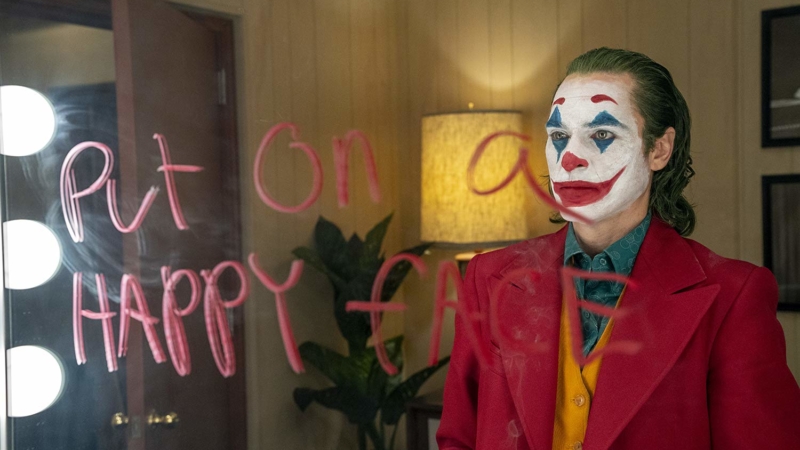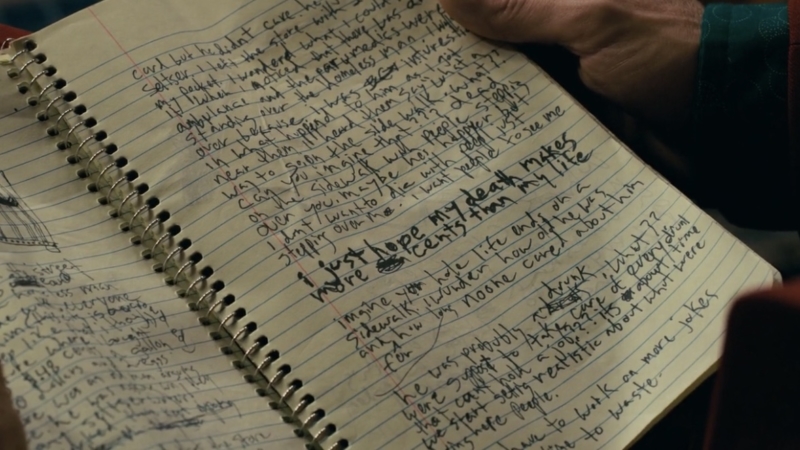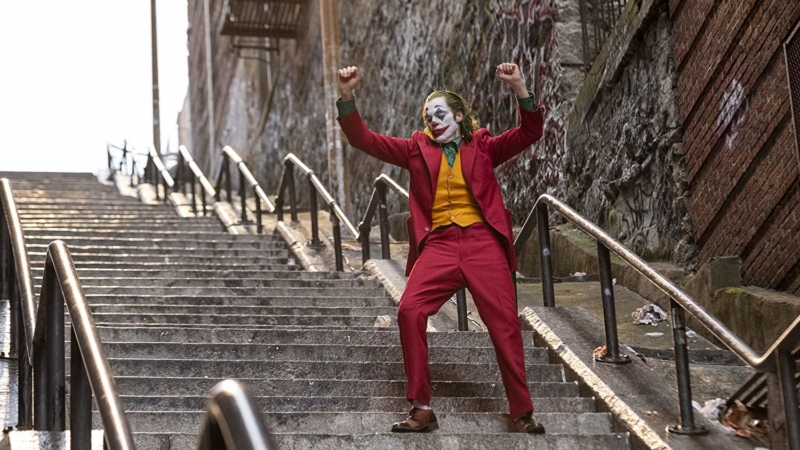
„Our intention, certainly, moving forward is using the continuity to help make sure nothing is diverging in a way that doesn’t make sense, but there’s no insistence upon an overall storyline or interconnectivity in that universe”. (Diane Nelson)
The implementation of the strategy could be observed in “Wonder Woman”, which subtly alluded to “Batman v Superman: Dawn of Justice”, but otherwise was a separate story you could follow without knowing the previous films. There’s another merit of this attitude — it allows relevant artistic freedom, and the creators do not have to follow any pattern set by previous directors. “Wonder Woman”, “Aquaman” and “Shazam!” are different when it comes to tone and aesthetics but, at the same time, they can exist in the same eco-system.
The changes in the process also led to HR reorganisation. Jon Berg resigned from the position of DC on film supervisor and was replaced by Walter Hamada. It wasn’t a coincidental choice as Hamada is a very successful producer ( “It”, “The Conjuring” universe) and is very careful when selecting projects, making sure that their budget is not too risky. Hamada brought Chantal Nong, who supervised “The Meg” and “Crazy Rich Asians”, on board. They have both been choosing projects that allude to a greater universe but working as standalone films too.
During these behind-the-scenes movements, a project was born, however, that tells a completely separate story. Todd Phillips’s “Joker”, because that’s what the project came to be, was supposed to be a first in a series of films which, similarly to comic books’ Elseworlds or DC Black Label, was supposed to be a story where creators were completely free to do anything. Todd Phillips (known for his “The Hangover” trilogy), unrestricted by Jared Leto’s depiction of the character, could prepare a script and make a film about a different Joker. A film, where he decided to delve into the villain’s origins and discover what made him mad. The effect? An unconventional comic book film which is closer to the 70s character studies than to the colourful CGI spectacles. Is “Joker” any good though?
WRITING THE STORY

Of course, you have to be careful with such on-the-fly changes. In “Joker”, however, they worked like a charm. Although the screenplay has its flaws, the story you watch unravel on screen is coherent and — when it comes to that factor — it would be hard to imagine its better version. And to think that the idea to make “Joker” came from… vanity. Todd Phillips, who had thought that comic book films were too loud, came out of the premiere of his “War Dogs” and saw a billboard for a new superhero film (probably “Suicide Squad”). “I won’t win the audiences with ‘War Dogs’”, he thought. “What do people really want to watch?” And in that moment, when he was looking at the billboard and thinking about the character studies from the 70s, a lamp appeared above his head: “What if I take today’s trend, a comic-book film, and mix it with my nostalgic memory of the past, the character study? Make a film in this forgotten genre but about a comic-book character?”

With Silver, Phillips decided to look into the comic books and borrow some themes but not adapt any of them specifically. The biggest inspiration was the aforementioned ”Killing Joke”. The writers took the “Joker as a stand-upper” and “Joker as an unreliable narrator” plot points from there. Then, they added other elements from the 80-year history of the villain, including some allusions to Batman (Bruce’s family and one important moment from his life are both in the film). But the comic books weren’t the only source of inspiration.Ssuch films as “The Man Who Laughs” (it is worth noting that this Victor Hugo’s adaptation also served as an inspiration for Bill Finger and Bob Kane when they created the Joker) and Martin Scorsese’s character studies such as “Taxi Driver” or “The King of Comedy” were equally important.

Fleck is a complex character, who is rejected in almost every way. Firstly, he comes from a lower social class and his financial situation is rather tough. That’s how the writers try to delicately suggest the problem of social inequalities caused by capitalism. They do this in numerous ways: by introducing Thomas Wayne who disregards the poor, by setting the film right before the mayoral election and by talking about growing social unrest and protests. It, of course, could be explored in a greater capacity, but you have to remember the writers treated the subject as a background because the main character himself was more important to them.
Secondly, Fleck is rejected because of his condition. His neurological disorder makes him burst out laughing at the most inappropriate moments. It leads to many unpleasant situations where it’s met with extreme reactions. The disorder itself is an interesting reimagining of one of the most important features connected with the Joker — his maniacal laughter.

“There’s a lot of ways you could look at this movie. You could look at it and go, ‘This is just one of his multiple-choice stories. None of it happened.’ I don’t want to say what it is. But a lot of people I’ve shown it to have said, ‘Oh, I get it — he’s just made up a story. The whole movie is the joke. It’s this thing this guy in Arkham Asylum concocted. He might not even be the Joker’”.
“This movie requires a certain amount of participation from the audience. It’s up to you how you want to interpret it and experience it. It’s less you being kind of presented with the facts than you being presented with these possibilities”, adds Phoenix.
Arthur’s rejection and the fact that life doesn’t treat him kindly (he’s constantly laughed at and attacked, and the free therapy program, which was supposed to help him manage his problems, gets cancelled) finally lead to a crack. The moment when he says “Enough!” could be read as a sort of warning. Not that every person with problems will finally do something violent but rather that the growing inequalities, prejudices and hate can lead to a tragedy. In the film, this tragedy is represented as a burst of aggression, but in reality, it can, of course, have a broader dimension.

GOING GROUNDED

Phillips stuck to all the principles he also adhered to when he was writing the script. This was supposed to be a film grounded in reality, opposite of a typical superhero cinema. Instead of explosions, spectacular battles and a lot of visual effects, the director wanted an intimate, insightful portrait of a character existing in a mundane, depressing world.
For instance, the realism can be seen in his approach to Gotham City. In various film incarnations, the city had many different forms: Burton’s dark metropolis filled with gothic buiuldings, Schumacher’s campy futuristic city, Nolan’s amalgam of American cities and Snyder’s dark counterpart to Superman’s Metropolis. Phillips decided to come back to Gotham’s roots. Having remembered that the Batman’s creators were inspired by New York he made his Gotham City a copy of this big American city. The depressing streets and housing estates are reminiscent of New York’s poor districts like the Bronx and make the story even more grounded in reality.
That’s a step further than Nolan’s “The Dark Knight Trilogy”. While he also created a fairly realistic world, his reality was flexible and an idea of a vigilante dressed like a bat seemed integral to it. You will not experience this in “Joker” though, or at least not in that capacity. Yes, the reality in Phillips’s film is flexible but it only serves the main character. There is no place for superhero fantasy because Fleck fantasises in a whole different way, by looking at the world through rose-coloured spectacles. It has, however, no negative effect on the realistic or at times even naturalistic aesthetics that the director chose.

Phillips was inspired by Scorsese not only when it comes to the plot but also aesthetics. Some critics go as far as to accuse him of being a mere copyist. And while there are a lot of ”Taxi Driver” like frames in “Joker”, it would be unfair to tell that the film is only a carbon copy. While similar thematically and visually, “Joker” certainly has got its own identity. It mainly results from the close cooperation between the director, the cast and the crew. Films are, of course, always a result of teamwork but here, it ran deeper than usual, which I mentioned when writing about the script. Phillips was very open to suggestions. He let his actors — Phoenix especially — improvise. A lot of solutions were sought after on the set and it resulted in really good scenes like the one in public restroom, right after the tragic events in Gotham subway.
Philips’s openness could also be seen when he prepared Phoenix for the role. He didn’t limit his imagination and didn’t tell him to research any specific mental illness. Thanks to this kind of liberty there were many opportunities for improvisation which the director gladly took.
DISAPPEARING INTO THE CHARACTER

What ultimately drew him to the project was the creative freedom. He says: “I didn’t refer to any past iterations of the character. It just felt like it was our creation. I think what was so attractive is he’s so hard to define and you don’t really want to define him. There were times I would find I was identifying certain parts of his personality and then I would back away from that because I wanted there to remain a kind of mystery. Every day felt like we were discovering new aspects of the character”. This lack of clear definition is key to Phoenix’s success. He plays a complex, unpredictable character, one that — even after you study him thoroughly — is still a mystery. As he also mentioned, although a radical and sudden physical change could be seen as bait for award-giving associations, it actually helped him feel the character’s madness. And to what came naturally, he tried to give another dimension by researching biographies of political assassins, also those who failed. It’s intriguing because, although the sociopolitical theme does play a role in the film, Fleck is rather a far cry from a typical political assassin. Phoenix could have, however, found there some elements which he deemed integral to his Joker depiction. He himself says that he wanted to create an unrecognisable composite rather than base his performance on any existing person.

Joker is of course synonymous with laughter. As I’ve already mentioned, it was reimagined in Phillips’s film as a neurological disorder. Phoenix researched this as well and watched videos of people with a similar condition. Based on these, he developed his own, unsettling laughter. It’s incredible how he laughs and shows Fleck’s suffering at the same time. Almost every time the character giggles, on his face, you can see the pain and the desire to run away. You need incredible acting abilities to show it as well as Phoenix does. But despite him being the acting axis of the film, you have to say something about the supporting players.

Sophie Dumond, to whom the main character is attracted, is also very important to the story. Zazie Beetz plays this cynical single mother who has a strong presence in some moments but is shown in a superficial, sometimes stereotypical way in other ones. This is, however, justified by the plot. This sort of double role Beetz has to play is a good match for the actress. We believe in her cynism but she is also credible when she starts to open. It is thanks to Beetz that the viewer will fall for the director’s illusion.

For Batman’s fans, Bret Cullen’s performance will be something of interest. He had already taken part in a bat-film directed by Christopher Nolan — in “The Dark Knight Rises” he played a congressman Byron Gilley. In “Joker” he took over a role of Thomas Wayne after Alec Baldwin resigned. This Wayne is different from his earlier incarnations. Not a noble doctor but rather a cynical, Machiavellian businessman, he’s almost that universe’s Donald Trump. Cullen has got perfect physiognomy for such roles, which serves as a complement to his acting. The scene when he gets to interact with Joaquin Phoenix is especially interesting. That’s when we see the essence of cynism and privilige of Wayne’s.
A FORM TO FIT THE CONTENT

The film’s editing, although not unflawed, is also solid. Jeff Groth, another one of Phillips’s frequent collaborators, goes for a slow, steady pace. It serves the story well and lets the viewer go as deep into the story as necessary. Interestingly enough, the editor did not always have an easy job because some scenes were shot in a few ways. He had to choose a version which would fit the tone of the story and not derail it. Murray Franklin’s TV show was a unique sequence in that respect. Groth had to edit material shot by TV and film cameras together and properly use the perspective in order to emphasise the scale of these elements. And although Groth sometimes uses cliche solutions, his editing serves the film well and is one of the main reasons the story affects the viewer.

Hairstyling and make-up by Nicki Ledermann and Kay Georgiou are also an innovation. Arthur Fleck’s appearance is the closest to a typical clown when compared to Joker’s previous depictions but, at the same time, there is something disturbing about him. As the make-up artist says, according to copyright law, no two clowns can look alike. It was a challenge but the effect is really amazing. Another interesting anecdote was shared by Kay Georgiou. When she was preparing Joker’s hair, she decided to have the hair dye as close as possible to the colour of… broccoli. Literally. It certainly is an interesting shade, which complements Fleck’s look really well.
As I’ve already mentioned, “Joker’s” Gotham City is basically the 70s New York. While scouting for locations, Mark Friedberg (“Selma”) looked for those that would accurately reflect the ambience of those times. It was difficult to find such in the New York itself, so some of the scenes were shot in Jersey City and Newark, which were accordingly rearranged. Even the tiniest details were taken care of: you can see the 70s buses, a lot of graffiti and even the accurate topography of the city. The interiors are also amazing, especially the cramped, dirty Fleck’s flat. All of it roots the story in reality and makes it hit the viewer even harder.

WHAT I THINK
“Joker” isn’t a masterpiece but it’s also a film you can’t just ignore. It’s a powerful, emotional story, which overwhelms you and makes you think. I want more comic book films like that.









Leave a Reply